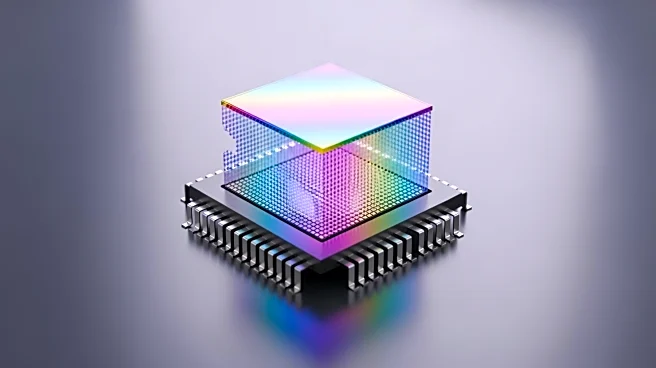What's Happening?
Engineers have accidentally developed a photonics chip that emits a rainbow of laser beams, potentially aiding data centers in managing the increasing energy demands of artificial intelligence (AI). This
chip, which splits a laser beam into multiple colors, allows for faster and more efficient data transmission compared to traditional single-wavelength optical networks. The discovery was made while attempting to enhance lidar technology, leading to the creation of a frequency comb on a chip. This technology could revolutionize data centers by replacing multiple lasers with a single compact device, thus saving space and reducing costs.
Why It's Important?
As AI continues to grow, the demand for efficient data processing and transmission increases. The 'rainbow-on-a-chip' technology offers a solution by enabling faster data movement with reduced energy consumption. This advancement could lead to significant cost savings and efficiency improvements for data centers, which are critical infrastructure for AI operations. Additionally, the technology's potential applications in portable spectrometers, optical clocks, and quantum devices could spur innovation across various fields, enhancing capabilities in scientific research and industrial applications.
What's Next?
Researchers are working on refining the chip's design to ensure consistent and controlled production of the frequency comb effect. As the technology progresses, it is expected to attract interest from tech companies and data centers looking to improve their operational efficiency. Further research will likely focus on expanding the chip's applications and integrating it into existing systems to maximize its benefits.











